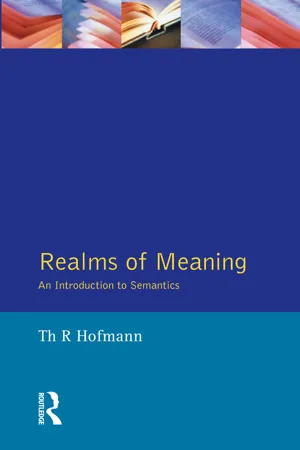Future Progressive Tense
The future progressive tense is a grammatical structure used to describe ongoing actions that will be happening at a specific point in the future. It is formed by combining the auxiliary verb "will" with the present participle form of the main verb. For example, "I will be studying" indicates an action that will be in progress at a future time.
5 Key excerpts on "Future Progressive Tense"
- eBook - ePub
- Gail Stein(Author)
- 2011(Publication Date)
- Houghton Mifflin Harcourt(Publisher)
...speaking of the work. The Future Progressive The future tense in Spanish shows what the subject will do or what action or event will happen in the future. The future progressive shows what the subject will be doing or what actions or events will be occurring in the future: Nosotros viajaremos durante el invierno. We will travel during the winter. Nosotros estaremos viajando durante el invierno. We will be traveling during the winter. The future progressive is most often formed by taking the future tense of the verb estar (estaré, estarás, estará, estaremos, estaréis, estarán) or any of the verbs of motion listed here [ see The Future Tense in Part III for the future tense conjugations of these verbs ] and adding the gerund expressing the action or event that will be occurring: Ella tocará el piano por la mañana. She will play the piano in the morning. Ella estará tocando el piano toda la mañana. She will be playing the piano all morning. Yo estudiaré el español. I will study Spanish. Yo seguiré estudiando el español. I will be continuing to study Spanish. Él traerá un regalo a mi casa. He will bring a gift to my house. Él vendrá a mi casa trayendo un regalo. He will come to my house bringing a gift. The Conditional Progressive The conditional mood in Spanish shows what the subject would do or what action or event would happen in certain situations...
- eBook - ePub
Realms of Meaning
An Introduction to Semantics
- Thomas R. Hofmann(Author)
- 2015(Publication Date)
- Routledge(Publisher)
...Many languages, however, do not have a special form for future events; we have a variety of ways to indicate future in English, the modal will being only one of them. Other aspects of when something happens are called (not surprisingly) aspect – for example, whether an action is continuing, completed, iterative, intermittent, or other possibilities that will occupy Chapter 8. In English we have two syntactic aspects called perfect and progressive. Most, perhaps all, languages make it obligatory to say something about when an event happens, and this obligatory marker often plays an important role in the syntax of the language. In English, for example, the word not and short adverbs (Av) are normally placed just after the auxiliary verb that carries tense (Ts), as in the examples below; and it is this same verb that appears at the beginning of a question. Technically it is sometimes called the ‘tense-carrier’, but we will take it as a location, the ‘centre’ of an English sentence, for it can be empty, as in the last example. These obligatory markers are usually called ‘tense’ in syntax, even if they do not specify the time relative to now, like Japanese -ta or Chinese -le for prior events. For semantics, however, tense is the indication of time, relative to the moment of speaking, before now, now, or after now...
- eBook - ePub
- Gail Stein, Mary Kraynak(Authors)
- 2010(Publication Date)
- For Dummies(Publisher)
...Chapter 7 Looking to the Future In This Chapter Expressing the future in three ways Forming the future of regular and irregular verbs Putting the future to use T his chapter allows you to look toward the future. You discover how to use the present tense to express a future action. You practice using the Spanish verb ir (to go) + the preposition a to say what a subject is going to do. And you discover how to form the future of regular and irregular verbs, all with no spelling or stem changes! Talking about the Future without Using the Future Tense You can tell someone that something is going to happen in the future without knowing how to create the future tense of a Spanish verb. How cool is that? You can use the present tense in certain situations, and in other situations, you can use ir (to go) + the preposition a + an infinitive. In the following sections, we explain exactly when you can use these non-future constructions to convey the future. Using the present to express the future You use the present tense to imply the future when asking for instructions or when the proposed action will take place in the not-so-distant or near future (see Chapter 3). Here are two examples of these usages: ¿Dejo de hablar? (Shall I stop talking?) Ellos pasan por nuestra casa. (They’ll be stopping by our house.) Expressing the near future You use the present tense of the verb ir (to go) + the preposition a (which has no meaning in this particular construction) + the infinitive of the verb to express an action that will be taking place rather soon or that’s imminent...
- eBook - ePub
TEAS Test Strategy!
Winning Multiple Choice Strategies for the Test of Essential Academic Skills
- Complete Test Preparation Inc.(Author)
- 2015(Publication Date)
- Complete Test Preparation Inc.(Publisher)
...English Grammar Multiple-Choice How to Answer English Grammar Multiple-Choice - Verb Tense This tutorial is designed to help you answer English Grammar multiple-choice questions as well as a very quick refresher on verb tenses. It is assumed that you have some familiarity with the verb tenses covered here. If you find these questions difficulty or do not understand the tense construction, we recommend you seek out additional instruction. Tenses Covered 1. Past Progressive 2. Present Perfect 3. Present Perfect Progressive 4. Present Progressive 5. Simple Future 6. Simple Future – “Going to” Form 7. Past Perfect Progressive 8. Future Perfect Progressive 9. Future Perfect 10. Future Progressive 11. Past Perfect 1. The Past Progressive Tense How to Recognize This Tense He was running very fast when he fell. They were drinking coffee when he arrived. About the Past Progressive Tense This tense is used to speak of an action that was in progress in the past when another event occurred. The action was unfolding at a point in the past. Past Progressive Tense Construction This tense is formed by using the past tense of the verb “to be” plus the present participle of the main verb. Sample Question Bill ___________________ lunch when we arrived. a. will eat b. is eating c. eats d. was eating How to Answer This Type of Question 1. First examine the question for clues about the time frame. The sentence ends with “when we arrived,” so we know the time frame is a point (“when”) in the past (arrived). The correct answer will refer to an ongoing action at a point of time in the past. 2. Examine the choices and eliminate any obviously incorrect answers. Choice A is the future tense so we can eliminate. Choice B is the present continuous so we can eliminate. Choice C is present tense so we can eliminate. Choice D refers to an action that takes place at a point of time in the past (“was eating”). 2...
- eBook - ePub
An Introduction to Biblical Greek Grammar
Elementary Syntax and Linguistics
- Dana M. Harris(Author)
- 2020(Publication Date)
- Zondervan Academic(Publisher)
...You can review that section of chapter 10 if this is still not clear. In this chapter, we will focus on the second and sixth principal parts. active middle passive present (1) imperfect future (2) (6) aorist (3) perfect (4) (5) pluperfect As with the perfect tense stem, there is much discussion concerning the aspect indicated by the future tense stem. Some claim that the future tense “does not contrast meaningfully with the aorist, present and perfect tense-forms and, to that extent, does not clearly convey verbal aspect.” Rather, the future tense indicates “expectation.” 1 Others, however, claim that the future tense-form is the only place in the Greek verbal system that indicates future time, based on the fact that time appears to be an uncancelable feature of every occurrence of the future tense-form in the GNT. 2 At present, it seems best to conclude that the future tense stem indicates future time. The Forms of the Future Indicative As far as building a verb goes, future indicative forms are relatively easy. We will start with the future active and middle indicative forms for regular verbs. Like the aorist, the perfect, and the pluperfect tense-forms, the future uses a tense formative. For future active and middle forms, this is a sigma. So we can “build” a future active indicative form as follows: future active tense stem future active tense formative connecting vowel primary active personal ending inflected form λυ + σ + ο + μεν → λύσομεν Here is the paradigm for the future active indicative of λύω. 1 sg λύσω I will release 2 sg λύσεις you (sg) will release 3 sg λύσει he/she/it will release 1 pl λύσομεν we will release 2 pl λύσετε you (pl) will release 3 pl λύσουσι(ν) they will release The future middle indicative is built with essentially the same components, except that it uses primary middle personal endings...




